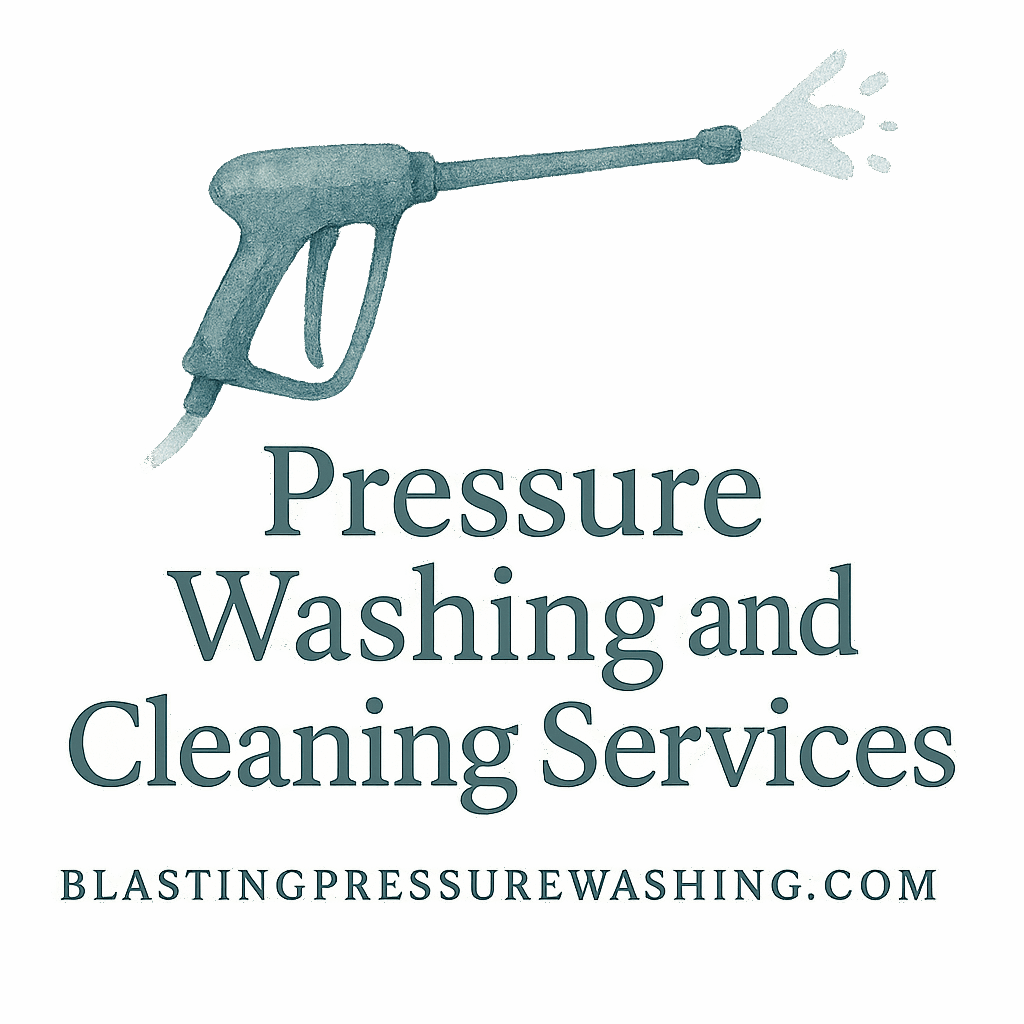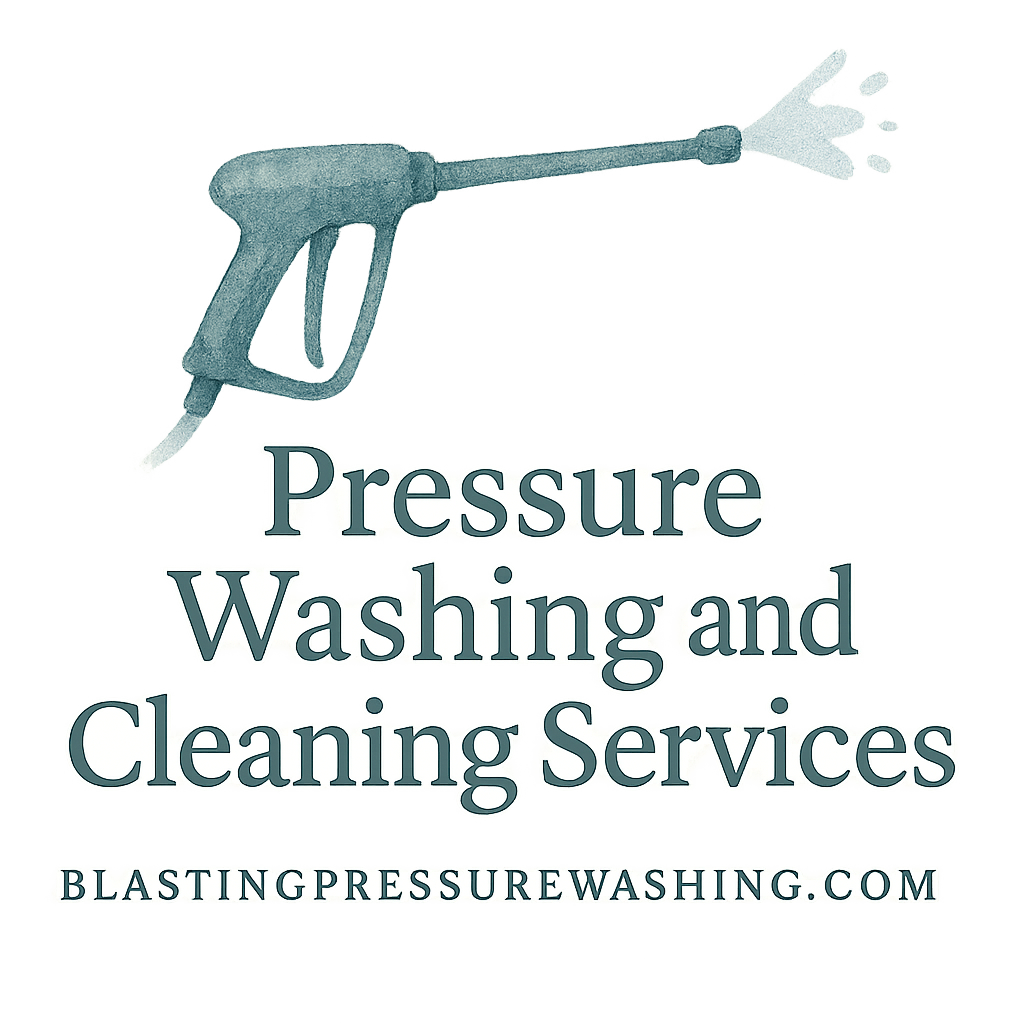Pressure washing is like giving your commercial property a full-body detox — when it’s done right, it brings new life to tired exteriors. But do it wrong? It’s a recipe for damage, wasted money, and even liability. Today, we’re diving into the 6 biggest mistakes to avoid in commercial pressure washing projects — so your building looks its best without the costly headaches.
Why Commercial Pressure Washing Matters
You already know your business needs to look clean and professional, but pressure washing isn’t just about making things shine. It’s about maintaining value, safety, and perception — all of which impact your bottom line.
First Impressions and Curb Appeal
Think of your building’s exterior as your business card. Clean, polished concrete and spotless siding scream “professional.” Grime and algae? Not so much. A well-maintained property boosts curb appeal and builds trust instantly.
Want to learn how pressure washing impacts curb appeal? Read more here.
Safety and Hygiene Compliance
For businesses in industries like food service, retail, or healthcare, cleanliness isn’t optional — it’s a compliance issue. Pressure washing removes mold, grease, oil, and slippery buildup that can be safety hazards.
Explore the benefits and safety of pressure washing.
Maintenance and Longevity
Neglecting cleaning leads to faster wear and tear. That grime doesn’t just look bad—it can deteriorate surfaces and reduce your building’s lifespan. Regular pressure washing = long-term cost savings.
Need expert help? Check out commercial pressure washing services.
Common Pitfalls That Sabotage Pressure Washing Success
Let’s walk through the six major slip-ups that can derail your project—and how to steer clear of them.
Mistake #1: Choosing the Wrong Equipment
Not All Pressure Washers Are Created Equal
Using a machine with too little power won’t get the job done. Use one with too much, and you could strip paint or damage siding. You need a washer matched to the surface material—whether it’s concrete, metal, or vinyl.
Overpowering or Underpowered Tools
Don’t assume all high PSI machines are better. The key is balance. You want just enough force to lift dirt without harming surfaces. That’s where expert knowledge pays off.
Visit our pressure washing techniques and tools guide to see what works best.
Mistake #2: Using the Wrong Cleaning Agents
Chemical Mismatches Can Damage Surfaces
Not all soaps and detergents are compatible with every surface. Using bleach-based cleaners on wood, for example, can leave permanent stains or warping.
Eco-Unfriendly Options Could Hurt Your Brand
Today’s customers care about sustainability. Harsh chemicals can flow into nearby landscaping or water systems. Opt for biodegradable, eco-friendly detergents to protect your brand and the environment.
Learn more about eco-friendly options and cleaning agents.
Mistake #3: Poor Timing and Seasonal Oversight
Ignoring Weather and Seasonal Changes
Washing in freezing temperatures or in the middle of pollen season? Not ideal. Plan your pressure washing projects around the right weather conditions to ensure effectiveness and safety.
Need help timing it right? Explore our seasonal pressure washing tips.
Scheduling Disruptions for Business Operations
Don’t forget your customers and staff. Avoid scheduling washes during peak business hours. The noise and wet surfaces can drive people away—literally.
Mistake #4: Inexperienced or Untrained Operators
Why “DIY” Often Means “Disaster” in Commercial Jobs
Your nephew with a pressure washer might be great with cars, but commercial buildings are a different beast. One wrong move can mean thousands in repair costs.
Lack of Safety Awareness and Liability Risks
Commercial projects need OSHA-compliant safety measures. Improper use can lead to injuries, lawsuits, or structural damage.
Need pros? Contact our commercial pressure washing experts for safe, reliable results.
Mistake #5: Skipping Pre-Cleaning Assessments
Every Surface Needs a Strategy
Not all grime is created equal. You need to assess the level of buildup, surface material, and surrounding environment. One-size-fits-all approaches just don’t work.
You Can’t Clean What You Don’t Understand
Certain areas—like signage, electrical boxes, and painted surfaces—need extra care. An inspection helps prevent damage and guides proper treatment.

Mistake #6: No Long-Term Maintenance Plan
One-and-Done Thinking Doesn’t Work
Pressure washing isn’t a one-time fix. Dirt and algae come back. You need a consistent cleaning schedule tailored to your property’s traffic, location, and materials.
Check out our residential pressure washing page—it’s packed with tips that also apply to business spaces.
Failing to Monitor and Reassess Over Time
Commercial properties evolve. That new construction nearby might increase dust. Or that tree out front? It’s now dropping sap on your storefront. Stay proactive with routine inspections.
How to Avoid These Mistakes in Your Commercial Projects
Now that you know what not to do, here’s how to keep your pressure washing project on track.
Hire a Professional Pressure Washing Team
Professionals understand surface compatibility, environmental impact, and safety protocols. They’ll also save you from costly errors.
Want trusted help? Visit Blasting Pressure Washing to get started.
Schedule According to Business Downtime
The best time for pressure washing is when your business is least active—early mornings, weekends, or holidays. Coordinate with your cleaning team for a disruption-free experience.
Explore advice on scheduling based on season.
Invest in Sustainable Cleaning Practices
Modern commercial cleaning isn’t just about looking good—it’s about doing good. Use eco-friendly chemicals and water-efficient equipment.
Check out our content on sustainability and environmental cleaning practices.
Final Thoughts
Pressure washing is a powerful tool for commercial property upkeep—but only when it’s done right. Avoiding these six mistakes is the difference between a pristine, welcoming space and an expensive mess. Whether you’re maintaining a retail storefront, industrial complex, or office park, the goal is simple: clean, safe, and professional. Don’t risk doing it wrong—partner with pros who do it right the first time.
FAQs
1. What’s the best time of year for commercial pressure washing?
Spring and early fall are ideal, depending on your region. Avoid freezing winters or peak pollen seasons. Read more here.
2. Can I pressure wash my commercial building myself?
It’s possible—but risky. Professionals know how to protect surfaces, stay safe, and use commercial-grade equipment.
3. What cleaning agents are safe for pressure washing?
Look for biodegradable, surface-specific, and non-toxic detergents. Avoid bleach-heavy products unless used by pros. Learn more about detergents.
4. How often should I pressure wash my commercial property?
Most properties benefit from quarterly to biannual cleanings—more often for high-traffic areas. Monitor your building’s condition regularly.
5. Will pressure washing increase my property’s value?
Absolutely. Clean exteriors boost curb appeal and reflect proper maintenance. Check out how it adds value.
6. Is pressure washing bad for the environment?
Not if you use eco-friendly products and methods. Learn about environmentally safe practices.
7. What types of businesses benefit most from pressure washing?
Restaurants, retail stores, medical facilities, warehouses, and office buildings. See more under business-related content.


